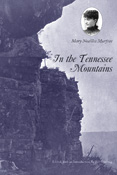In the Tennessee Mountains

- Author(s): Murfree, Mary Noailles
- Series:
- Imprint: Univ Tennessee Press
- Publication Date: 2009-03-12
- Status: Active
- Available in Paper: Price $24.95 | Buy Now
“Hardwig makes Murfree come alive for us, and he helps us to see why we should still care about her work and her understanding of her historical moment and region.” —Stephanie Foote, author of Regional Fictions: Culture and Identity in Nineteenth-Century American Literature
“The rapid ascent and decline of Murfree’s literary reputation, her unique standing as a popular interpreter of Appalachian people, her portrayals of strong female characters, and her complicated stance as an insider/outsider-tourist/native, southerner/non-southerner, male/female-all of these dimensions of Murfree make her an especially appealing subject of analysis.” -Barbara C. Ewell, Dorothy Harrell Brown Distinguished Professor of English, Loyola University of New Orleans
Writing under the pseudonym Charles Egbert Craddock, Mary Noailles Murfree published her first collection of stories, In the Tennessee Mountains, in 1884. It quickly won critical and popular acclaim and was reprinted sixteen times in the first two years of its publication. Many notable writers and publishers praised Murfree’s work, and the “Dean of American Letters,” William Dean Howells, recognized her as one of the most significant writers of the burgeoning “local color” movement.
When In the Tennessee Mountains was published, it was lauded for telling the “true” story of Appalachia. However, although she grew up in Tennessee, Murfree had almost no contact with the kinds of people she depicts in her stories. Indeed, she was a child of wealth and privilege whose primary experience of the people of Appalachia was with the local residents who interacted with her family during their summer vacations at Beersheba Springs, a Cumberland Mountains resort. Still, Murfree expressed much admiration for the Appalachian people who populate her writings and intended to depict them honestly.
Bill Hardwig argues in his critical introduction to this new edition that In the Tennessee Mountains has much to teach us about the aesthetic, political, and literary scenes of 1880s America while contributing to current debates about “literary tourism” and regional writing. In addition, Hardwig has compiled a useful new bibliography that accounts for all of Murfree’s published and unpublished writing, along with critical works about her, including initial reviews of In the Tennessee Mountains, and contributions to current discussions of local color and regional writing.
Bill Hardwig is an assistant professor in the English Department at the University of Tennessee, Knoxville.
